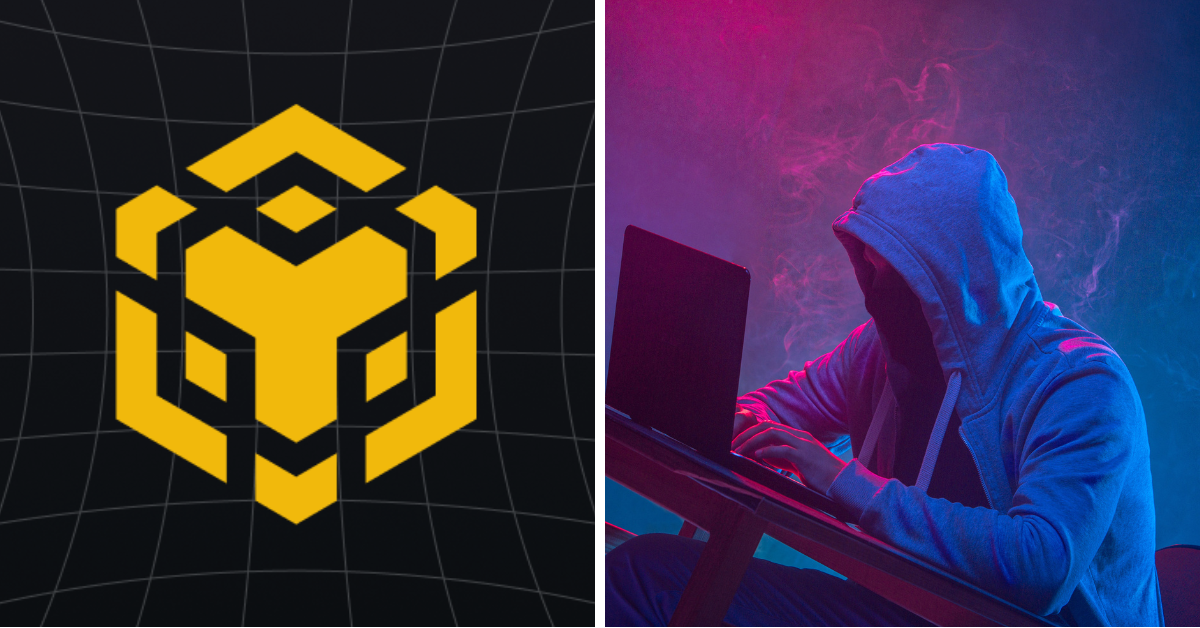Decentraland first experience: virtual world based on Ethereum
Foreword: Decentraland released its virtual world last week, and Blue Fox Notes also experienced the product initially. At present, there are some virtual buildings and some designs are dazzling, but on the whole, it is still in the very early stage of product polishing. . According to opensea's NFT sales, Decentraland ranks first, with sales of 1273.8 ETH over the past seven days, which is about $ 340,000. From the perspective of its token economic mechanism, Decentraland's MANA tokens can be used to purchase land in the virtual world. The supply of land in the virtual world is 90,000. In addition, MANA can be used to purchase Chinese goods in the virtual world. . There are also payments for platforms, donations, and governance votes on core decisions. From the perspective of MANA's token use, it has a deeper embedment with its virtual world scene. In other words, the value of MANA depends on the development of Decentraland itself. Now that the product has been released, will it develop? Everything is still very early, everyone can experience and observe by themselves. The writer is Michael McSweeney (theblock), translated by "Auker" from the "Blue Fox Notes" community.

Summary
- Ethereum-based virtual world Decentraland was released last week.
- I spent hours exploring the world, participating in activities, visiting places, and exploring as much as possible.
- Long story short: Decentraland is an ambitious virtual world, but it is still rough.
When Decentraland was released last week, I started hanging around it and didn't find much guidance. The player's instinct (perhaps so to speak) is to find some goals or take them to the next step in the next event.
But I was working at the time, using a laptop, so I decided to plan to sit down and explore properly later in the evening. In the end, I played for two and a half hours and took notes and screenshots to organize my experience in this new virtual world.
- Viewpoint | Historical data inventory, see the evolution of Ethereum
- Weekly development of industrial blockchain 丨 Blockchain policies are frequently promulgated, and many points of government application blossom
- Viewpoint | Blockchain-based fintech is a weapon for epidemic prevention
To be clear: this review is not a review of Decentraland's economic support, token model, and how to use the Ethereum blockchain. Steven Zheng's article is quoted below to help new readers understand the core concepts of Decentraland:
"Real estate on Decentraland is represented by a non-homogeneous token (NFT) LAND. Users can purchase LAND with Decentraland's native token MANA. Similar to the real world, land ownership will be recorded. On Decentraland, LAND ownership will be Recorded on the Ethereum blockchain. Unlike Second Life, the owner of LAND has full control over its virtual land. As stated in Decentraland's terms of service: In the virtual world, buyers own the land they buy. They can control their own land. "(Blue Fox Note: Second Life, also known as Second Life, is a very famous virtual world project in the Internet era. There were once users who operated virtual real estate on it and earned hundreds of US $ 10 million. Second Life project was released in 2003 and is still in operation today)
In short, Decentraland is a virtual world where players can actually own what they build and get, and player ownership is recorded through Ethereum transactions.
Instead, my reviews are meant to record my personal experience as a player, just like I walk down the street and experience in Decentraland. I do not own LAND, MANA or ETH tokens. No token does affect my personal experience. Besides, I want to experience how this world feels to me. If Decentraland tells me what to do, I will do nothing. The only exception is that I get some tips from other users via Twitter.
Result: I did find out what I could do. However, I spend a lot of time wandering in this virtual world, meeting some architecture, artistic constructs, and occasional players. I also encountered some bugs and performance issues, which are to be expected for a completely experimental virtual world release.
Do I like this experience? I think so. I'm a fool for social games and I tend to play multiplayer games. But will I come back to play Decentraland again? This is a more difficult question to answer. I think what determines the fate of this project is that as a platform, people on it should be able to come and play together.
But let's dig deeper.
Begin our story.
Signing up for Decentraland is very easy. Although compared to my initial experience, this time I had to connect to the MetaMask wallet to verify my account. No problem, I already have a MetaMask wallet, so I connected and entered it. My avatar incarnation is a Mohawk, and I also wear a suit and sunglasses, obviously inspired by the dress of Geordi LaForge.

Cool, isn't it? I agree. I made a good choice.
Once I completed the tutorial in front of me-picking up the key to unlock, moving the joystick, and pressing the button-I entered the portal. After a loading screen, I reappeared … as a brunette woman. This was the first bug I encountered, but, without hesitation, I decided to keep using my new avatar. In addition, her turquoise is very fashionable.
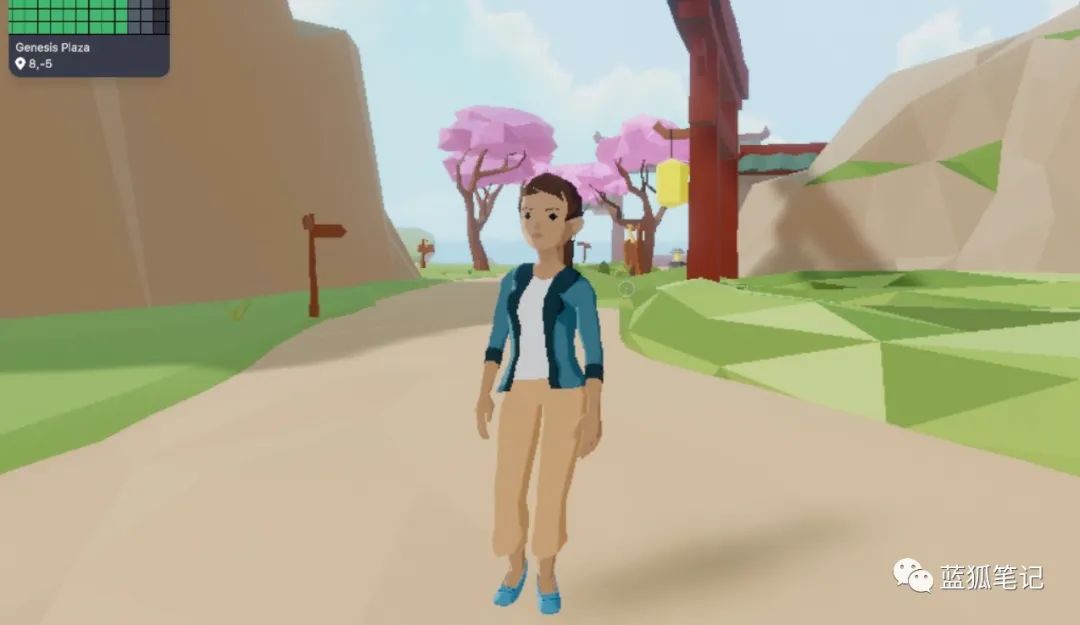
Right in front of the first appearance, there is a temple with some statues inside. Once I crossed the gates-literally through them-by typing the command, I was prompted to "find a stunning destination." Well, if Decentraland said so, I would have to do it!
I was taken to the street with some buildings and placed me directly in front of the "Crypto Valley Convention Center". (Blue Fox Note: Crypto Valley Conference Center, "Crypto Valley Conference Center" was established after a land purchase by an entity in Decentraland)
Naturally, I started to walk in. When I walked into the entrance, I was prompted: Attending a treasure hunt, I can get some collectibles. However, if I find it, I have to pay some Ethereum gas fees. (Blue Fox Note: This is very natural, you need to go through the Ethereum transaction operation to put the collection under my name.) So naturally, I accepted it again. And, once again, it was thrown out through the loading screen.
I then appeared in front of a group of buildings, including the Sugar Club, which I guess is a dance club based on the Decentraland franchise. Once you enter, it will prompt you to make a donation in the music, and in the next room, there is a constantly changing image board, one of which is Goku (Blue Fox Note: Goku is Goku, is Japanese comic "Dragon Ball" Protagonist of the series). Looks pretty cool.

Nearby, I discovered the promised treasure, of which I found 10 MANA tokens and a commemorative T-shirt for my incarnation. However, since I do not have any ETH, I cannot pay transaction fees. So, the only reward I searched for was the thrill of discovery. (Blue Fox Note: Since the author does not have ETH, these NFTs cannot be collected into their own through transactions, so the thrill of collecting these NFT collections cannot be experienced)
There is also a building nearby that predicts price data for cryptocurrencies (BTC, ETH, EOS) and interpretation of voice recordings for each network. Because of curiosity, I pressed the three buttons in quick succession and they started playing immediately, even though I was far away from the building, I could still hear the sound playing continuously.
Around this time, I started to encounter more and more brand advertisements for HTC Exodus "blockchain mobile phones".

Initially, I wondered whether HTC has reached a formal partnership with Decentraland. It turned out to be true.
The assets I came across can be found in the "Builder" module, which allows LAND owners to place structures and items on the plot according to their chosen layout. I can meet the HTC brand throughout the virtual world. To be honest, after a while, this made me a little disliked.
Once I found a building full of lizards that seemed to be watching some kind of show together. This got me interested, I went in and see what they were looking at? HTC Exodus phone!

From a business perspective, I think this embedding makes sense. But as a player, I feel billboards everywhere. Maybe there is a better way to handle this, maybe not. Anyway, as an explorer, I feel a little uncomfortable.
Do virtual business
Essentially, most of what I found was creative experiments conducted within the Decentraland framework. Honestly, I think it's cool. I found some very well-designed structures, including a T-Rex skeleton, a volcano with amphitheater on the top of the mountain (with working lights), and a spooky forest that emits weird sounds and music.
I am a big fan of Minecraft-it has a lot of freedom of expression during the creative process-Decentraland shocked me because it is an open canvas, and the owner of LAND is free to create content.
Or, in turn, they can play Harambe games, a gorilla-themed slot machine, on a virtual Casino called Chateau Satoshi. (Harambe, Chinese name Harlanbe, it is a gorilla living in the Cincinnati Zoo in the United States, but unfortunately, in mid 2016, a small boy fell into the gorilla exhibition area and was shot to save the child Kill. This incident caused anger among netizens and caused continuous media attention)
No, seriously, it does exist (as they say):
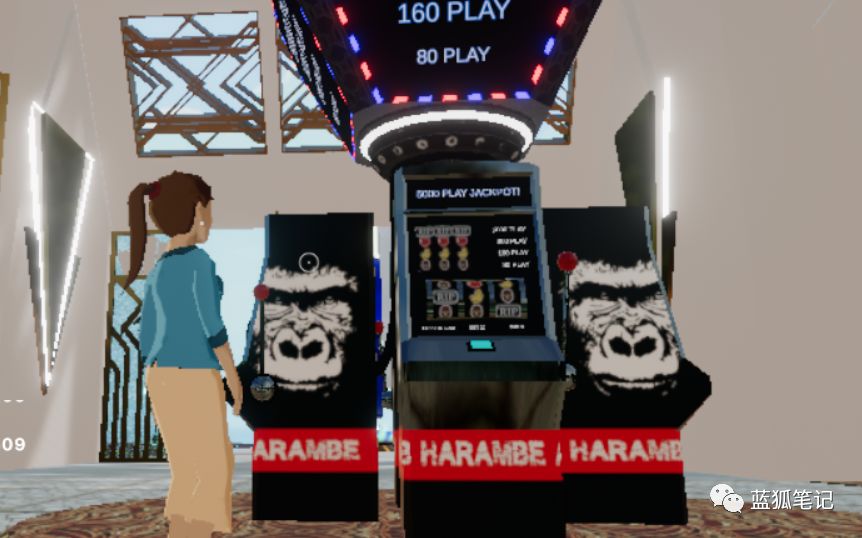
Beside the joke, Casino is one of the areas I met on Decentraland, and someone might say it is a "use case". One of the things about Second Life is that it allows the creation of a completely virtual business, and Chateau Satoshi, produced by Decentral Games, seems to belong in this field. Currently, Casino allows users to spend on the Ropsten test network using fake "PLAY" tokens.
My big question-what will emerge as I wander around this virtual world-for casinos, how much of a business model it will have. Do they pump every game?
Decentral Games disclosed their plans in detail on their February 19th blog, including real gold and silver matches, Lamborghini-style NFT, and more. Asking for comments, project consultant Peter Dhaliwal told me: "At the moment, we are programming the smart contract of the game into the game. We will release the smart contract code after the second audit, and all players can see our game It's fair and verifiable. "Casino's future plans include poker and blackjack.
He mentioned in the email: "In essence, we are a virtual land developer specializing in casinos. We think our casinos and games are the best in Decentraland and we are about becoming a bigger and better developer And feel excited. "
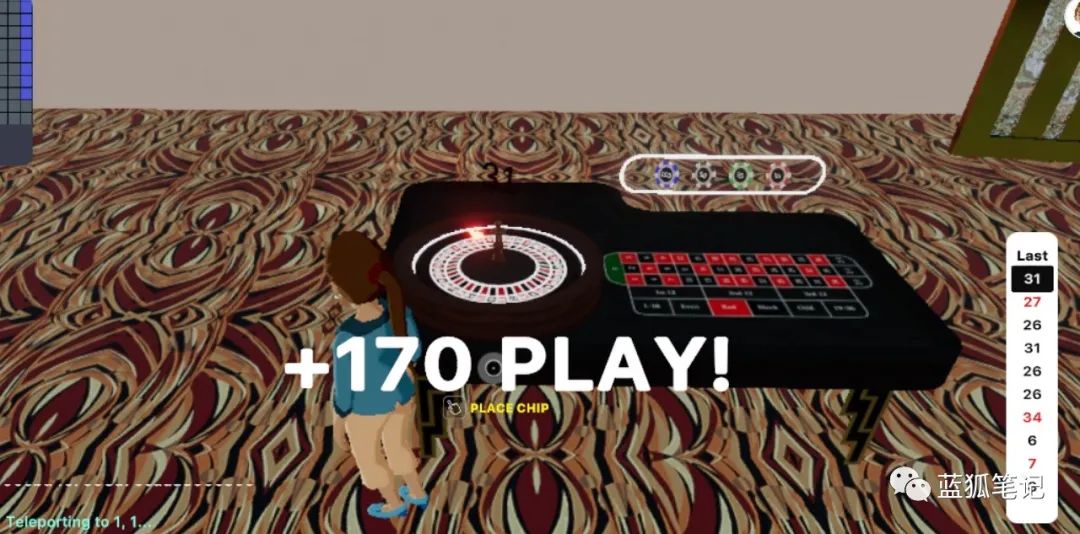
I encountered other emerging business models in Decentraland, the most famous being the business / event space. There is a place called "Decentraland Convention Center" that allows event planners to customize the amount of event space to rent, but I can't figure out how it actually does this kind of rental. The building itself is empty (although event organizers can customize their space during actual events). Maybe someone can do a virtual expo?
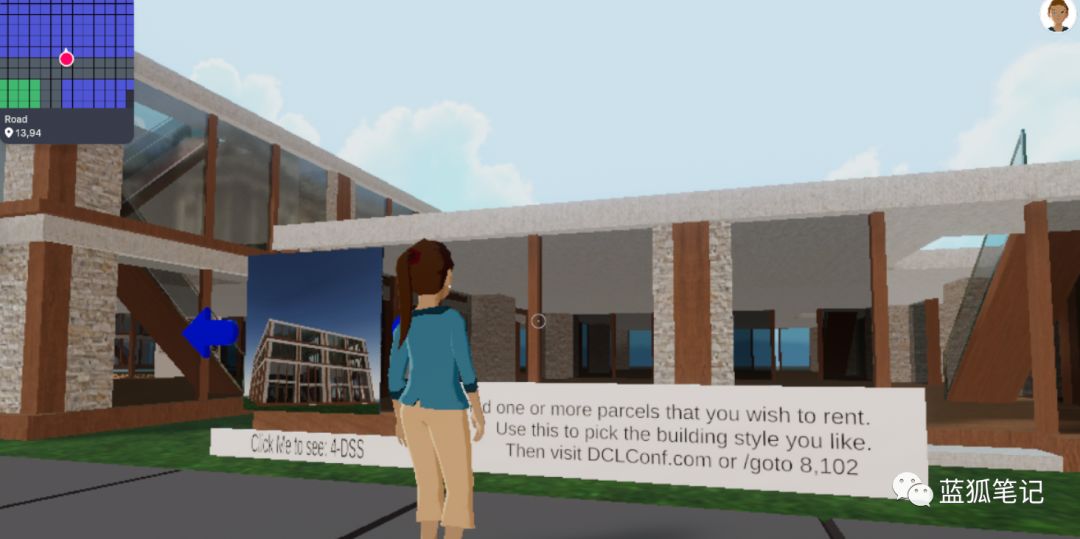
I came across a similar design with its own Sugar Club location inside, and if there are other similar designs, then it shows that people would think that Decentraland might be a place for virtual residents to meet online. I'm not sure how much communication can be done on such a front end. Perhaps a third-party app like Discord could come in handy, but who said that people wouldn't try the recent discussion about virtual meetings during a pandemic?
As expected, advertisers have also opened stores on Decentraland.
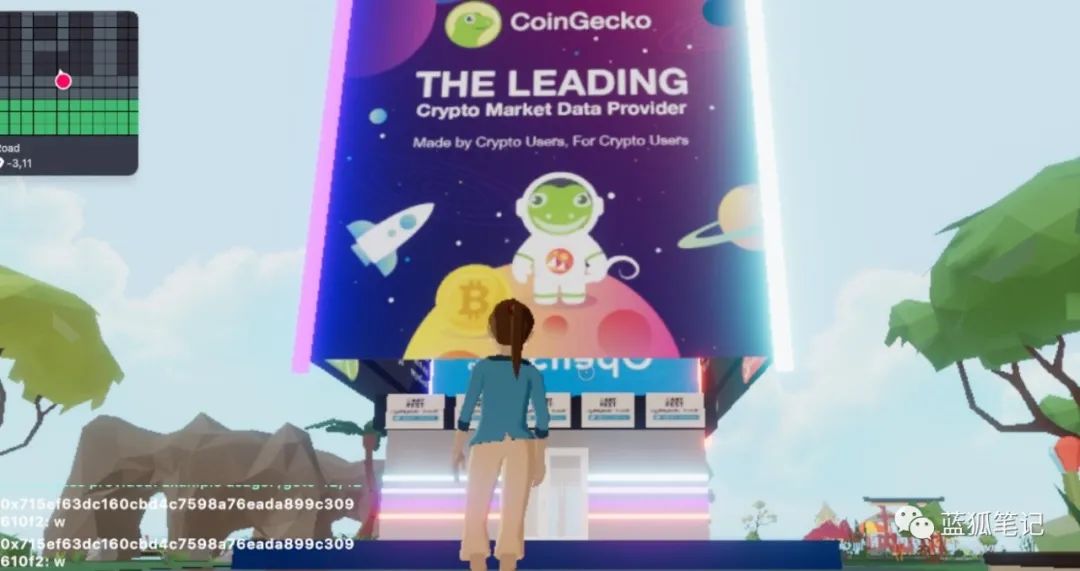
In this case, I saw ads for OpenSea and CoinGecko, which went beyond what I understand as a network of newsstands throughout Decentraland. Similarly, I am not sure who will benefit from such a layout, but my immediate response is that I encountered a monetized art space.
Born for Art
At least for now, in the composition of Decentraland, art feels central. In addition to the creative works and arrangements that are visible throughout the virtual world, I also encountered several places dedicated to displaying digital art.

As explained in its mission statement, the museum district exists to "become a crypto arts hot spot on Decentraland and the most visited art venue in the world." When I was at the museum, I thought it was a sublime aims.

As I mentioned in a tweet on the release day, the Museum District is perhaps the most compelling use case on Decentraland I currently encounter. Here, the idea of user-centric ownership is most obvious.
In theory, an art space in which an artist can participate can be created. Although I couldn't say what other business model of the museum district apart from donations during my visit, the issue of ownership seemed to make the most sense.
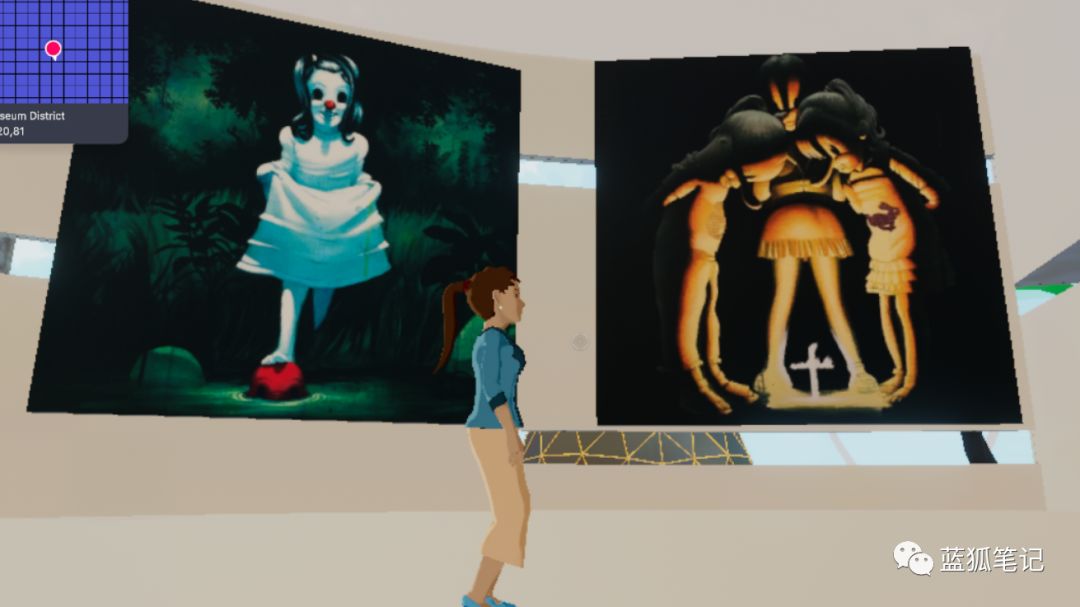
This experience also reinforced a completely different point of view for me. I should mention that my time at Decentraland was very lonely.
Yes, this is the release date. Yes, by design, users are divided into different areas to expand more users. However, with the exception of the few users I met, at most we simply said "hello" and then moved on, and I wandered alone.
In the Digital Museum, I think it's great to share the experience with others, to talk about which work resonates best, or just stand there and see the creative results when others are present. Yes, it's like a real museum.
Maybe someday it is possible. For the artists who exhibit their work here, I definitely hope so.
Performance issues
I did encounter some technical issues and bugs during my use of Decentraland. In addition to the bugs mentioned in the avatars mentioned earlier, my browser has had issues with Decentraland multiple times. This seems to happen most often in busy or animated areas I've visited and can eventually be resolved after refreshing the page.
In some cases, the camera started to shake, especially when I was standing on top of a building. I play Decentraland almost entirely in third person mode, and this problem keeps appearing in that mode.
I noticed that some of them were purely visual. For example, sometimes when my avatar's feet are covered by the floor (as shown below), sometimes my avatar seems to be floating on the ground. From the user's perspective, this is not a big problem. Excellent graphics do not necessarily bring a good experience, but since we are talking about performance here, it seems to be worth mentioning.

I did encounter a random error on Decentraland's dedicated splash screen while hovering in a forest area that looked cool. The screen suggested that I reload, I did as requested, and then it returned to normal. I saw similar feedback on Twitter, so it seems that I have encountered other people.
In terms of performance, even when using a gaming laptop with a GTX 1060 graphics card, the minimum graphics settings are the best for me. When I switched to the highest possible setting, the frame rate dropped, and in the end I kept it at the "medium" level with almost no jitter.
Overall, these experiences make the product feel like it's not finished. No company can completely avoid bugs or errors, but, of all the interesting things I encountered, I still think of some Alpha-level games that I have tested in the past.
Conclusion
Regarding the user experience in Decentraland, I can also add 1000 words. It can be said that it is clear that when entering the actual user experience, there will be some ideas, but it still feels unfinished. The bugs I stumbled upon reinforce this impression, and over-advertising like HTC is a bit uncomfortable. Usually, it is just an empty piece of land. The unused land is separated from the developed area. At the end of the whole process, it brought some pressure to me.
However, from a purely empirical perspective, I do think that Decentraland will develop in the future.
Whether it will succeed is a completely open question. To be honest, historically, it is not good for them. Even the once prominent World of Warcraft has entered a long dusk. Although it has promoted more and more game-changing updates, users are still lost. I also prefer the "Elite Dangerous" game, a large space simulation game that can hold up to thousands of players a day.
People seem to bet that Decentraland will succeed. As Kalami Russo pointed out in The Defiant newsletter, over 121 transactions in the past week, NonFungible sold $ 160,000 of LAND. In the past month, more than $ 500,000 in sales were completed in 467 transactions. Obviously, virtual mortgages are also available in Decentraland, which shows that people see some sort of opportunity. Of course, Decentraland raised more than 86,000 ETH in the 2017 crowdfunding.
But does this work? Like many crypto projects, Decentraland's success seems to depend on the actual appearance and use of people. Is it more of a virtual curiosity, or will it turn into a real world full of life, which seems to be far-fetched, but then again, isn't that true of many people in the early days of Bitcoin?
I don't think I will come back to play Decentraland anytime soon. However, I will wait and see if people will catch their virtual vehicles and start raging forward.
Risk Warning: All articles of Blue Fox Notes can not be used as investment advice or recommendations. Investment is risky. Investment should consider personal risk tolerance. It is recommended to conduct in-depth inspection of the project and make good investment decisions.
We will continue to update Blocking; if you have any questions or suggestions, please contact us!
Was this article helpful?
93 out of 132 found this helpful
Related articles
- DeFi week selection 丨 bZx should be stolen? How should DeFi be taxed
- Is Ethereum resistant to Asic mining? No, this is a rumor!
- Analysis of the main organizations in the Cosmos ecosystem: Agoric, Regen, Lunie, and Chorus One
- When the real crisis comes, the safe haven Bitcoin is forgotten
- Babbitt weekly election 丨 FCoin came to an abrupt end after a thunderstorm; "Mentougou" bitcoin whale lost thousands of bitcoins
- Data decreased slightly, rumors triggered a single-day net outflow of Binance
- Weekly | Central Bank issues technical specifications for financial distributed ledger, blockchain financial applications are expected to accelerate


